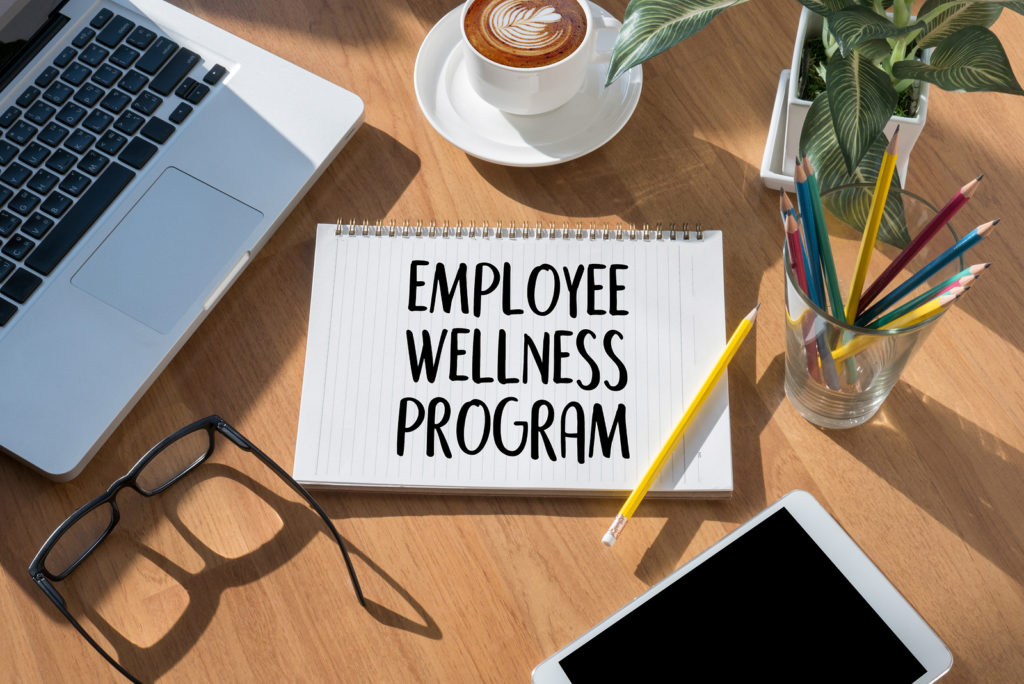
In a 2013 survey, the Law Society found that a staggering 95% of employees in the legal sector had experienced stress at one time or another in the workplace, or as a result of their work. In more recent years, there has luckily been increased awareness and greater emphasis placed on the critical role health and well-being plays in reducing the impact of stress and mental health issues have on both employees and their organizations.
Health and wellbeing is, of course, an important consideration for all sectors, but there’s particular impetus for the legal sector to ensure employees are taking care of themselves, given the high-pressure working environment and often unsociable hours fee earners are expected to work. In a survey last year, Legal Cheek found that a leading law firm had an average leave time of 10:02 pm, causing trainees and junior lawyers to rack up average daily work hours of 12:28.
Given that high-performing fee earners in the legal sector are often compensated as such, it’s tricky to encourage these employees to proactively look out for themselves and achieve a healthy work-life balance. For most, the dangled carrot of financial reward is often more enticing (or seen as more necessary) than the consideration of their own health and wellbeing.
An impactful health and wellbeing consideration can be quite simple to plan and execute, and hugely beneficial. We’re not just talking about expensive subsidized gym memberships or encouraging healthy office snacks – it’s more to do with how taking breaks and considering how impactful an extra days ‘impulsive’ annual leave could be for wellbeing.

The impact of health and wellbeing activities
CIPD’s recent health and well-being survey looked at how health and wellbeing activities had impacted those companies who have implemented them in the last year. The most common cause of absence across all sectors was mental health, and the third was stress, showing the impact that a lack of focus on health and well-being can have on businesses. Overall, 13% of the respondents were made up of professional service businesses – which includes the legal sector. Not surprisingly, 31% of respondents reported lower absence due to sickness and 20% reported a reduction in work-related stress, a key consideration for the legal sector.
Health and wellbeing checklist
We’ve created a health and wellbeing checklist of activities for you to use to implement a more positive focus in your organization, with a particular focus for the legal sector.
Keeping reasonable work hours
This can be a difficult one to “enforce”, particularly with fee earners who are undertaking complex cases and are required to help a range of clients, not necessarily within what would be considered “office hours”. Perhaps offering flexitime or monitoring the employee’s billable hours (if they’re tracking time spent on cases anyway!).
Taking breaks
Again, can be a difficult one to drive if workloads are heavy and employees don’t feel as though they can leave their desk. You can’t force people to take breaks after all. Perhaps try creating a bit of a culture wherein groups of people take a lunch break together – being part of a wider group will make them feel more of an obligation to leave their desk and spend time with their colleagues. If you can’t make this happen every day, maybe something like a Friday lunch club will ensure they at least get some break time once a week.
Equipping your team with the right tools
This is health and safety 101, but an important part of helping employees feel comfortable at work and reducing the occurrence of things like RSI and eye strain is ensuring they have the right equipment. Assuming your employees in the legal sector are sitting at a desk using a computer, you should ensure that you do regular display screen equipment (DSE) assessments. Employees should be able to request and be provided with back supports, foot rests, wrist rests for their keyboard and mouse (if appropriate) and anti-glare filters for computer monitors. There’s a free checklist on the HSE website which will help you complete a DSE assessment.

Initiating friendly conversations
This is a question of culture. What’s the atmosphere like in your office? Do people feel they can have a friendly chat whilst still maintaining a productive environment? Obviously, in a law office there is not likely to be much time during the day for idle chit-chat, but creating an environment where your employees can socialize with one another at break time, over a hot drink or even during a quick visit to the printer is important to a happy and healthy work environment. If you’re a manager or partner, lead by example by initiating these friendly conversations yourself.
Keeping the fridge stocked
A healthy stomach is a massive help towards a healthy mind. Encourage your employees to snack healthily by keeping your fridge and kitchen stocked with things like fruit and nuts which your employees can freely graze on throughout the day whilst avoiding sugar and complex carbohydrates.
Letting your employees speak up
A happy employee is one who feels supported and listened to. Encourage all of your employees – from paralegals to partners – to speak to their line manager or HR manager (if you’ve got one) with any problems, big or small. Making sure employees feel safe and confident coming to you with issues means they’ll feel respected and more a part of your organisation. Better for their health and wellbeing as an individual, and better for your organisation as a whole.
Organising team-building events
Many an employee will likely roll their eyes or even shudder at the thought of a “team-building” activity – but it doesn’t all have to be role-playing or building rafts at the local country park. Think outside the box a little and engage your employees with activities like escape rooms or monthly office bake-offs.
Regular team meetings
This may or may not be a regular occurrence within your departments, but if isn’t it should be. And while you will no doubt spend much of the meeting discussing cases and other matters related to your work, you should ensure you also include time in the meeting to discuss other matters (commonly known as “any other business”!) – this where team members can bring up any issues or contribute any ideas they have to make the work environment better for everyone.
Schedule mental health days
Mental health is obviously a legitimate reason for an employee taking a sick day – but it’s obviously slightly different to taking “regular sick leave”, for physical illnesses. First of all, there is still a lot of stigma around mental health and taking time off work. Encouraging your employees to learn more about mental health, and allowing them to take mental health days as they would other sick days will help to create an understanding and accepting culture around the topic of mental health.
Recognition
It’s important to recognize and celebrate your employees’ achievements, in order to make them feel valued and to maintain their overall sense of wellbeing at work. Structured reward or award programs like Employee of the Month can be a great way to make people feel valued – but sometimes, a simple “thanks” or email recognizing some hard or good work can go a long way.
It’s time to put more of an emphasis on employee health and well-being – it’s of particular importance for the legal sector which as we know is highly susceptible to stress and other mental health problems caused by work. Hopefully, by following some pretty simple steps and implementing in your organization, you can create a more healthy and supportive environment for your employees, benefiting them and the wider organization.
Author: Charli Parkes, e-days

